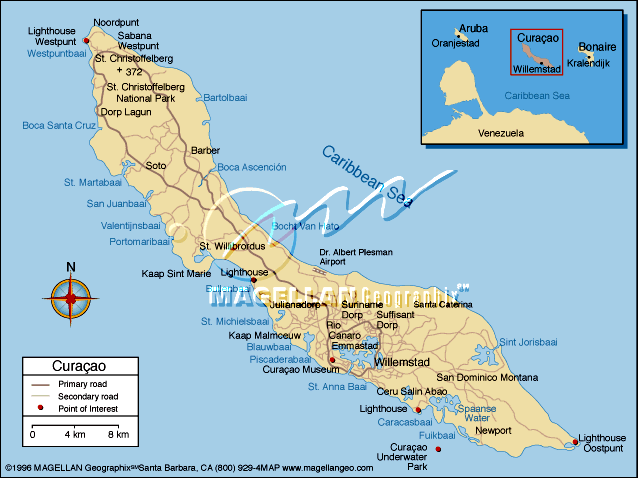
The coastline along the south is irregular, peppered with small bays and inlets, including the spectacular bays and beaches at the west end of the island. The largest bays are located along the central-east and east end of the island, where you'll find the capital and major port of Willemstad. Most of Curacao's 170,00 residents live in and around this historic town.
The long north coast of the island, buffeted by constant northeast trade winds, is characterized by a rough coasthne, limestone cliff formations set on top of eons-old volcanic rock, and weather-beaten terrain. It is generally less inhabited than the south coast, but you will find smaller villages and many of the island's famous landhuis, or old plantation house, structures here.
The west end of the island is also characterized by expansive, hilly terrain, most of it encompassed by Christoffel Park. The 4,500-acre (1,820-hectare) park contains Mt. Christoffel, at 1,239 feet (377 meters) the highest elevation on Curacao. The east end of the island comprises flat and mostly barren plain, with few settlements and some secondary roads weaving to and from its coastal inlets.
With an average 20 inches (510 mm) of rainfall vearly, Curacao is generally a dry island. There are few standing bodies of water save some saline ponds, and most of the island's water is provided by a large desalinization plant found on the south coast.
